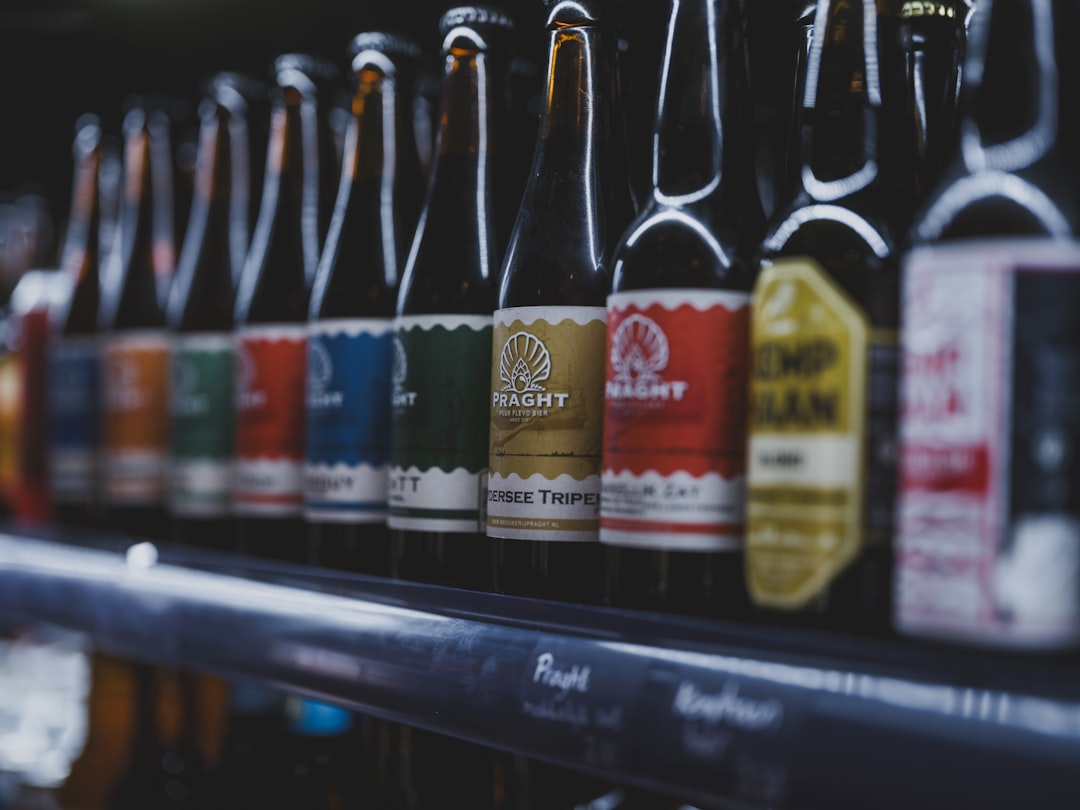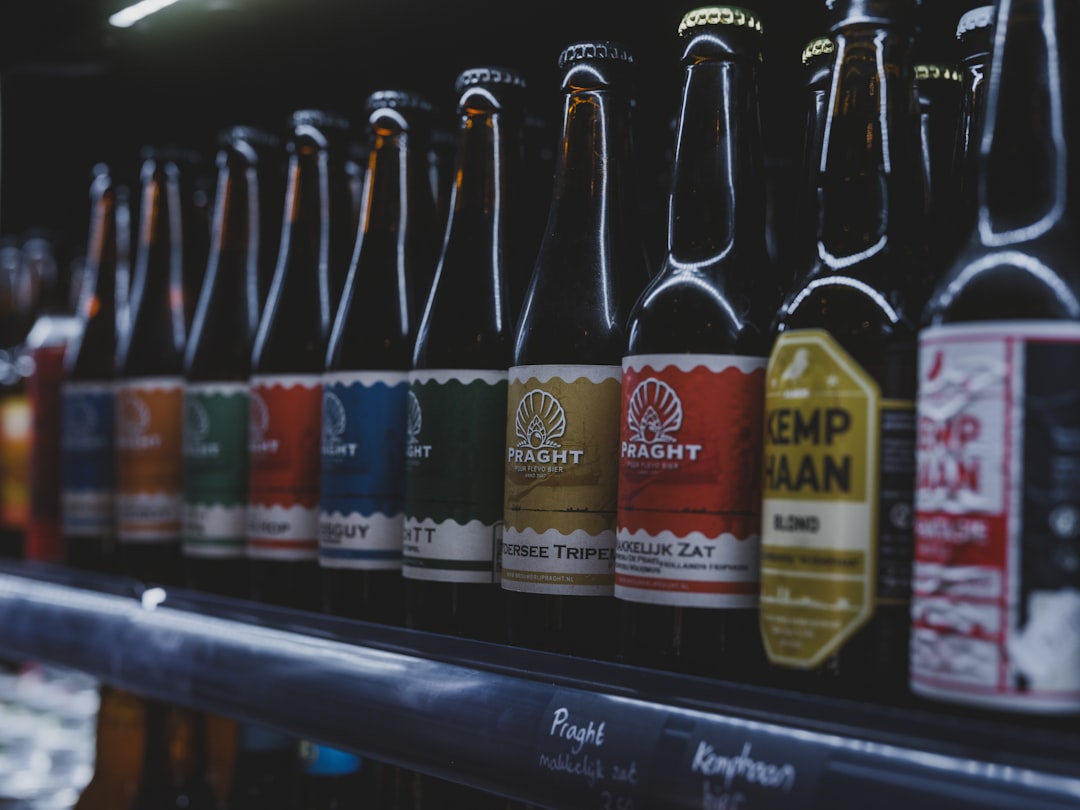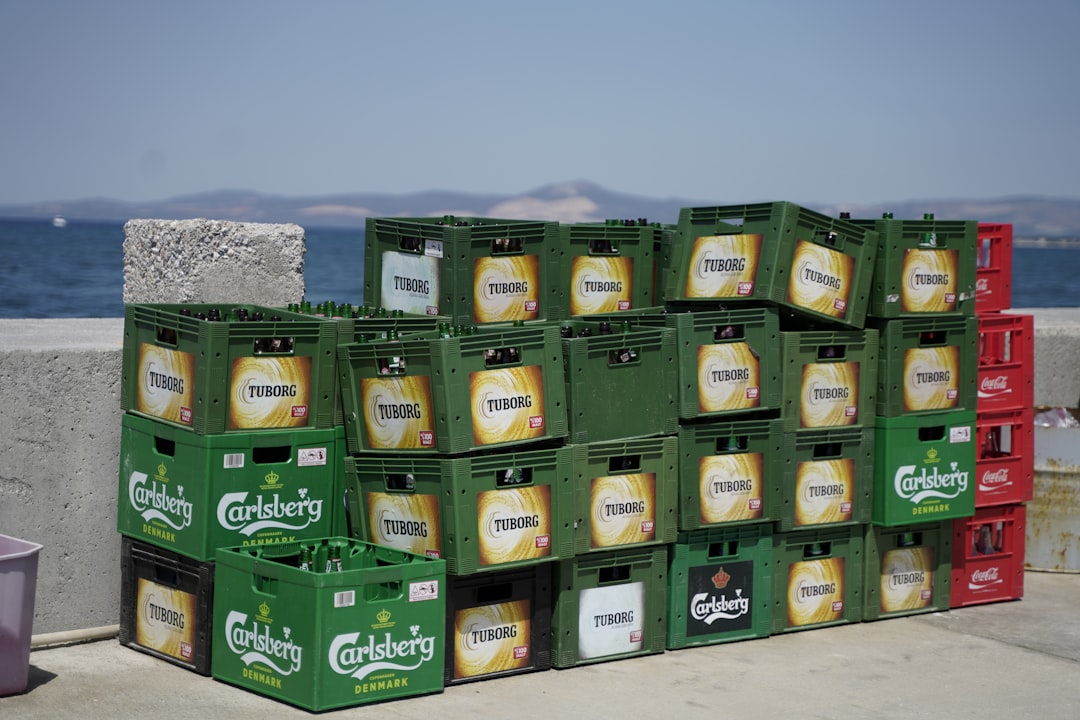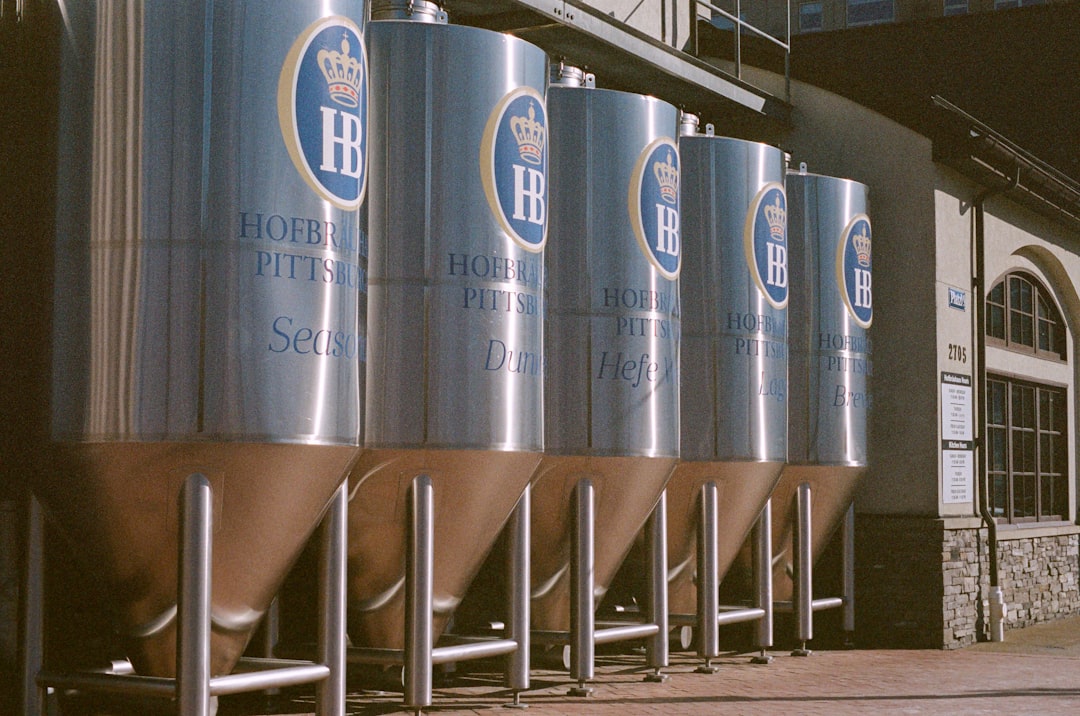

Engage prospects with a scan and streamline customer engagement with FREE QR code marketing tools by Sona – no strings attached!
Create a Free QR CodeFree consultation

No commitment

Engage prospects with a scan and streamline customer engagement with FREE QR code marketing tools by Sona – no strings attached!
Create a Free QR CodeFree consultation

No commitment
QR codes have evolved from a novelty to a strategic powerhouse for bridging offline engagement with online action. For wholesale beer distributors, QR codes deliver a frictionless, data-enabled method to boost lead generation, overcome traditional process bottlenecks, and seamlessly connect physical products or marketing collateral with digital destinations, removing the need for complex apps or onboarding.
Amid industry challenges like mounting competition, persistent compliance pressures, and fragmented customer data, wholesale beer distributors often miss high-value opportunities simply because prospects and partners interact with analog materials that go untracked. QR codes address these pain points by enabling timely promotions, simplifying form-less data collection, and surfacing engagement signals that would otherwise go unseen, improving both operational efficiency and business insight. For beverage brands, see beverage QR marketing.
This guide explores how thoughtful QR code integration elevates modern beer distribution marketing, strengthens lead management, and transforms the customer and partner experience. Discover best practices for bridging data gaps, real-world strategies for campaign execution, and actionable ideas for deploying QR codes at scale to empower your wholesale beer business to convert every interaction into measured growth.

One stubborn challenge in wholesale distribution is losing track of high-potential leads who encounter physical marketing but never make it into your CRM. QR codes bridge this critical gap, translating booth visits, packaging scans, and delivery paperwork into online conversions and trackable pipeline. When you pair QR codes with CRM enrichment and marketing automation, every scan becomes a buying signal that can kick off a personalized journey.
Another common barrier is operational friction in analog workflows like paper order forms, printed catalogs, or manual support requests. QR codes do not just digitize these interactions, they streamline them. Scanners arrive at prefilled forms, reorder portals, or rep contacts with one tap, shortening the path to purchase and eliminating errors from manual data entry.
Here is how to put this strategy into motion:
Modern distributors who use QR codes with data enrichment unlock higher conversion and close the attribution gap between offline and online engagement, turning everyday analog touchpoints into measurable business wins. By standardizing design, tracking, and follow-up, you can repeat what works across territories without adding complexity for reps or retailers.

Legacy processes make it difficult for distributors to know which partners and buyers are actively engaging, especially when prospects research products or compliance details without submitting contact forms. This lack of visibility results in missed follow-ups or lost upsell chances. QR codes convert curiosity into action by giving people an immediate path to the next step, whether that is learning about a seasonal SKU or placing a replenishment order.
The benefit goes beyond convenience. QR codes create a single connective layer across packaging, point-of-sale materials, vehicles, invoices, and events. That layer captures engagement data, ties it to specific campaigns, and feeds it into systems your teams already use. With dynamic control, destinations can be updated as pricing changes, promotions rotate, or regulations evolve.
Key benefits of QR codes for this sector include:
By surfacing new engagement signals and integrating them with existing account data, wholesale beer distributors can transform anonymous interest into actionable leads and measurable process improvements. The outcome is a tighter, more responsive revenue engine that meets partners where they are.

Distributors face tactical challenges when traditional contact capture and product education are slow or underused. Flexible QR code formats simplify these interactions by turning a scan into a structured action. Selecting the right format is crucial to minimizing friction and maximizing conversion.
Static QR codes are fine for evergreen assets, but dynamic QR codes are more suitable for campaigns in a fast-moving category like beer. Dynamic codes let you switch destinations without reprinting, add UTM parameters for tracking, and integrate with analytics and CRM workflows. The result is speed, relevance, and consistent measurement across placements.
Centralized management with a platform like Sona QR allows agile updates and real-time optimization. You can sunset outdated links, rotate offers, and keep destinations aligned with stock levels or seasonality without disrupting the sales process.

Many opportunities go unrecognized because analog touchpoints rarely capture buyer intent or engagement. QR codes address missed upsell, cross-sell, and reorder signals by focusing on placements that draw frequent attention and have high commercial value. The best locations are those where buyers are already engaged and have a reason to act.
Think about where you can remove steps from a process or add clarity at a key moment. If a retailer is reviewing a paper invoice, a QR code that opens a prefilled reorder form captures momentum. If a consumer sees a seasonal label in a taproom, a code that opens a nearby retailer locator channels interest into a sale.
By focusing QR code deployment on points where missed engagement signals are most costly, distributors surface new opportunities for revenue and improved customer relationships. Consistency in call to action, design, and follow-up ensures these placements perform predictably across territories.

The most effective QR programs solve a specific business problem with a clear next step. In beer distribution, that usually means making reorders easier, tightening compliance workflows, capturing event leads, and speeding support. Start with a small set of high-impact use cases, measure them, then scale what works.
The following examples map directly to common interactions between distributors, retailers, and consumers. Each pairing connects a physical moment to a digital action while capturing data you can use to prioritize outreach and plan future campaigns.
These real-world use cases show how QR codes not only replace inefficient legacy processes, but also ensure every interested retailer or partner is nurtured consistently. Because each scan can be tagged by product, territory, or event, your team learns where demand originates and how to replicate success.
Wholesale distributors often lose track of high-fit accounts when leads originate offline or never make it into formal marketing lists. Each QR scan carries intent, context, and account-level detail. When centralized through your CRM and ad platforms, those signals become segmented audiences that power targeted outreach and higher conversion.
The key is to architect your QR ecosystem so every placement corresponds to a known stage of the buyer journey. Awareness scans should guide nurturing, consideration scans should trigger sales alerts, and conversion scans should prompt post-purchase upsell or loyalty actions.
Modern solutions such as Sona QR can auto-enrich profiles and prioritize outreach using behavioral scoring. This ensures no opportunity is lost to incomplete data or missed segmentation and that your sales team focuses on the accounts most likely to convert.
Distributors risk fragmented data and uncoordinated engagement when offline and digital channels remain siloed. QR codes unify the buyer journey by making every printed piece, package, or screen an onramp to a measurable digital destination. This creates continuity from first impression to closed sale and beyond.
When integrated with marketing automation and CRM, QR codes turn each channel into a performance channel. You can identify which placements drive scans, compare conversion across territories, and reallocate budget toward the highest-value assets in real time.
QR codes serve as the offline onramp to your digital marketing engine. With a centralized platform like Sona QR, you can manage all codes, monitor performance, and sync scan data with your CRM and ad platforms to build a complete picture of engagement.
Persistent challenges like failing to follow up on high-quality leads or guessing at campaign ROI can be overcome by following a structured QR implementation process. A repeatable framework helps teams move quickly without sacrificing measurement, compliance, or brand consistency.
Use the following steps to plan, launch, and optimize campaigns that convert. Each step aligns QR activity to a business outcome while ensuring that design, placement, and analytics support the goals of your territories and partners.
Select a use case that maps directly to revenue or operational efficiency. For wholesale beer distributors, high-impact examples include instant product reorder via QR on delivery receipts, digital sampling requests at trade shows, and dynamic compliance links on kegs and case labels.
Choose the code format and configuration based on your need for flexibility and tracking. Most distribution campaigns benefit from dynamic QR codes that allow updates and measurement without reprinting.
Design influences scan rates and trust. Your code should be prominent, visually framed, and accompanied by a benefit-driven call to action that tells people exactly what they will get.
Place codes where the action is. Match placement to audience behavior and scanning context to reduce friction and increase conversion.
Analytics turn scans into insights and revenue. Set up tracking before you launch so you can quickly adjust creative, offers, and placement based on real-world performance.
This process minimizes untracked engagement and reduces the risk of missed business from incomplete manual workflows. It also creates a closed-loop system that continuously improves as you learn from scan behavior.
Traditional data blind spots in wholesale beer distribution, from anonymous traffic to missed follow-ups, hurt attribution and stifle strategic growth. QR codes solve the measurement gap by tagging offline interactions with unique identifiers that carry through to your CRM and reporting tools.
The goal is not only to count scans but to understand how each scan contributes to the buyer journey. When you connect scans with subsequent actions such as form fills, portal logins, or purchase orders, you can attribute revenue and determine which offline assets drive the best outcomes. For deeper measurement strategy, see Sona’s blog post Single vs Multi-Touch Attribution Models and Measuring Marketing’s Influence on the Sales Pipeline.
Modern QR platforms surface:
Sona is an AI-powered marketing platform that unifies attribution and activation to turn first-party data into revenue. With Sona QR and Sona.com, you can go deeper:
This level of tracking means no scan and no potential lead goes unmeasured. Distributors gain line-of-sight from the point of engagement to booked revenue and can scale investments based on evidence rather than assumptions.
Unconverted demos, incomplete data, and anonymous engagement are persistent pain points. The right operational habits can turn a successful pilot into a repeatable growth program across territories and channels.
Focus on tips that map to the physical media you use most, support a clear call to action, and integrate with tools that your teams already trust. Small changes in design and process can produce meaningful gains in scan rates and conversion.
Creative deployment examples include QR codes on keg collars that link to freshness and compliance details, plus a reorder button for retailers, and QR codes on seasonal menu inserts that open a retailer locator for consumers and collect opt-ins for future promotions. For packaging ideas, check these beer and wine QR tips.
QR codes deliver results when they are embedded in real workflows and backed by timely follow-up. The most successful programs pair a strong call to action with a clear operational owner who acts on the signal within hours, not days.
Consider these practical scenarios as inspiration for your own deployments. Each shows how a small change at a physical touchpoint can improve both customer experience and performance measurement.
These examples demonstrate how QR codes address persistent pain points, from lost data to inefficient follow-up, powering sustainable growth and operational excellence. Start with a single workflow pain point, measure impact, then expand.
Industry experience shows adoption often stalls if QR initiatives lack a clear purpose or remain disconnected from follow-up processes. Their value comes from speed, clarity, and integration, not from the novelty of scanning alone.
Avoid missteps by aligning your QR program to measurable goals, the physical environment, and the buyer journey. Prioritize accessibility and compliance, and ensure every scan has a logical, valuable next step.
Attention to these strategic and practical details ensures that QR adoption directly addresses real challenges while maximizing both compliance and ROI. Over time, you will build a library of proven patterns that replicate across products and regions.
Persistent data blind spots and manual workflows have caused lost opportunities in wholesale beer distribution for years. By deploying QR codes with integrated analytics, modern distributors can overcome these obstacles, gain full visibility into engagement, accelerate the sales process, and drive measurable business growth. Each well-placed QR code represents a missed lead found, a compliance risk mitigated, and an offline action transformed into a quantifiable business asset.
For wholesale beer distributors, QR codes are more than a technical upgrade, they are a strategic bridge that unifies disjointed workflows, surfaces previously invisible buying signals, and brings new precision to sales, marketing, and regulatory operations. With Sona QR to create, manage, and track codes and Sona.com to attribute scans to pipeline and revenue, you can capture demand at the source and convert it into results you can measure. Start creating QR codes for free.
QR codes have transformed wholesale beer distributors from traditional supply chains into dynamic, data-driven growth engines. Whether it’s streamlining customer acquisition, enhancing distributor-buyer interactions, or tracking product engagement, QR codes replace outdated methods with instant, mobile-friendly actions that capture real-time insights—turning every bottle, case, or promotional material into a powerful conversion tool. Imagine knowing exactly which distributor campaigns boost orders and being able to optimize them instantly.
With Sona QR, you can create dynamic, trackable QR codes in seconds, update marketing efforts without reprinting, and link every scan directly to sales performance. No missed leads, no wasted promotions—just smarter strategies that maximize revenue and strengthen distributor relationships. Start for free with Sona QR today and turn every scan into a meaningful connection and measurable growth.
The article does not provide specific guidance on finding reputable wholesale beer distributors.
Best practices include using QR codes to digitize analog workflows, tracking engagement metrics, placing codes in high-visibility locations, integrating with CRM and marketing automation, and ensuring clear calls to action with proper staff training.
QR codes streamline data capture by converting physical interactions like order forms and marketing materials into digital actions, enable prefilled reorder forms, speed compliance responses, capture event leads, and reduce manual errors in wholesale beer distribution.
Legal considerations include ensuring compliance with regulations by using dynamic QR codes for up-to-date recall notices and regulatory information, and validating data handling practices for privacy and accuracy.
QR codes enhance customer experience by providing instant access to reorder portals, product information, compliance details, and support contacts, creating seamless offline-to-online engagement without complex apps.
Use Sona QR's trackable codes to improve customer acquisition and engagement today.
Create Your FREE Trackable QR Code in SecondsJoin results-focused teams combining Sona Platform automation with advanced Google Ads strategies to scale lead generation

Connect your existing CRM

Free Account Enrichment

No setup fees
No commitment required

Free consultation

Get a custom Google Ads roadmap for your business






Launch campaigns that generate qualified leads in 30 days or less.
